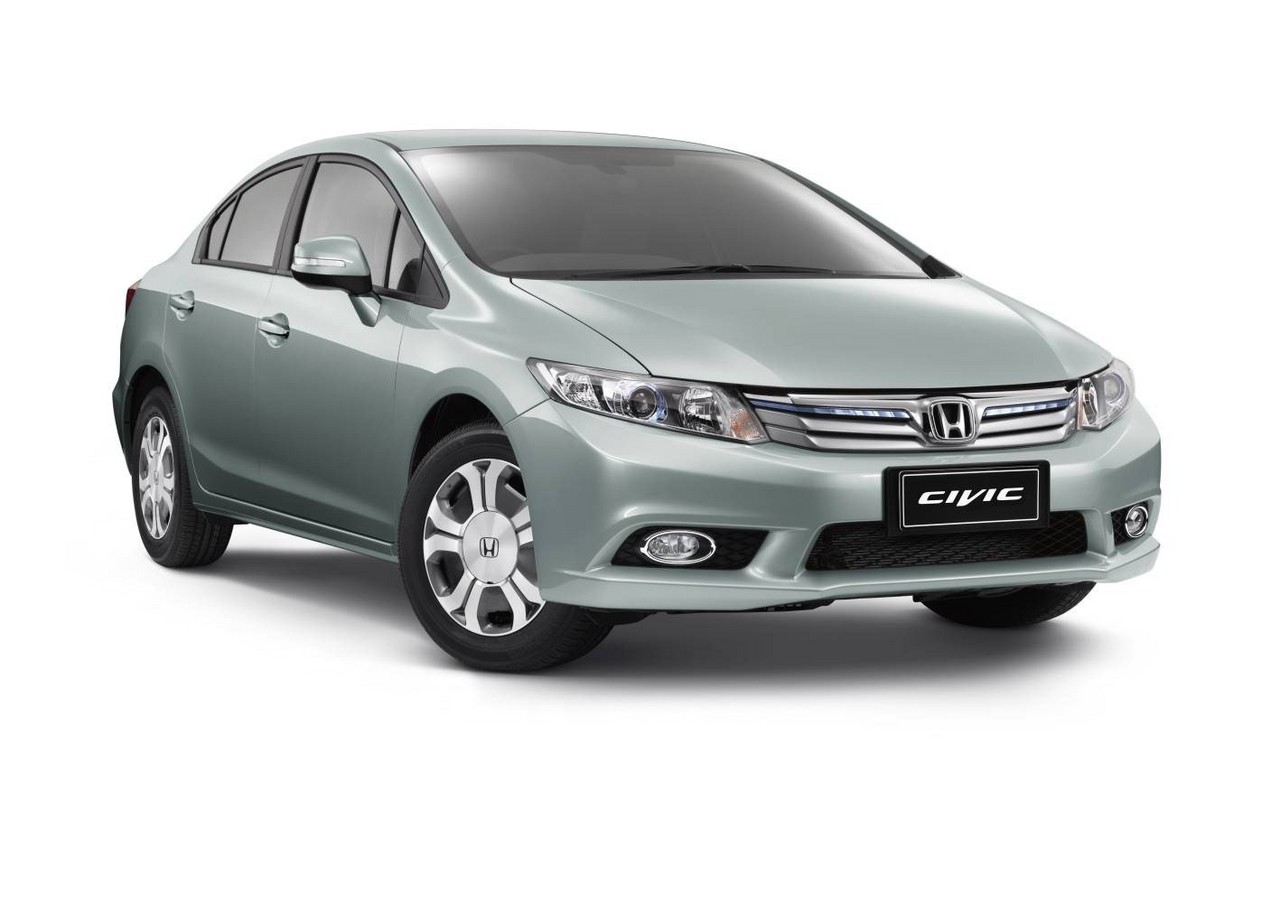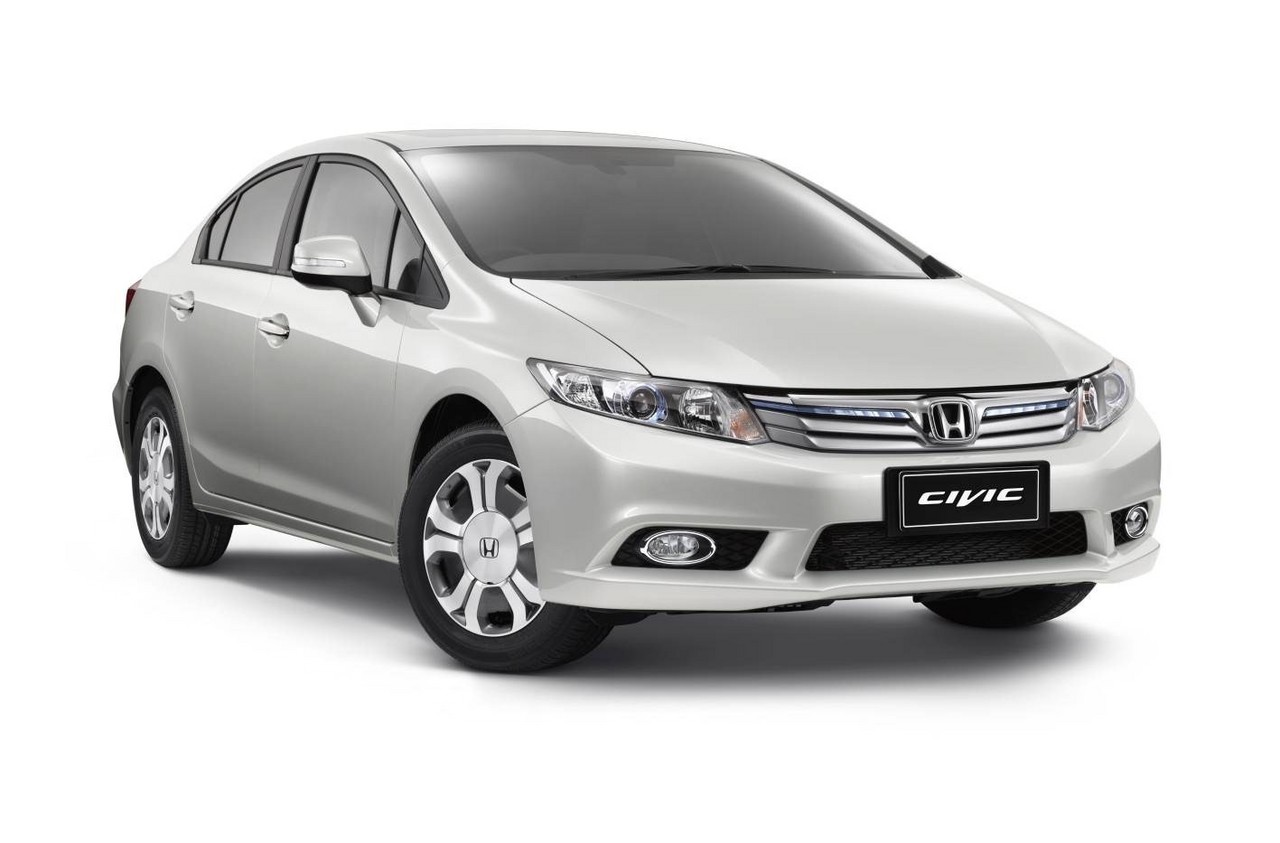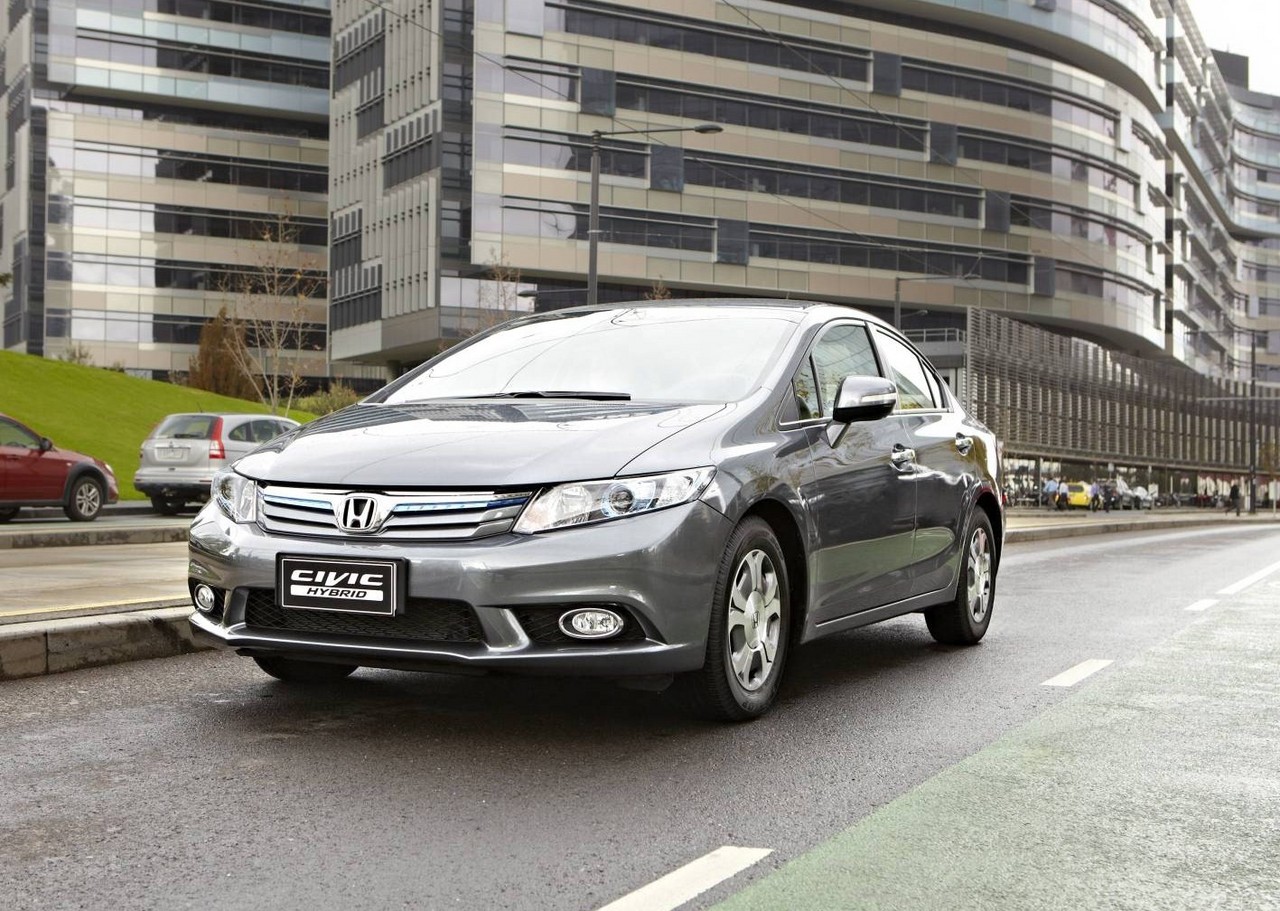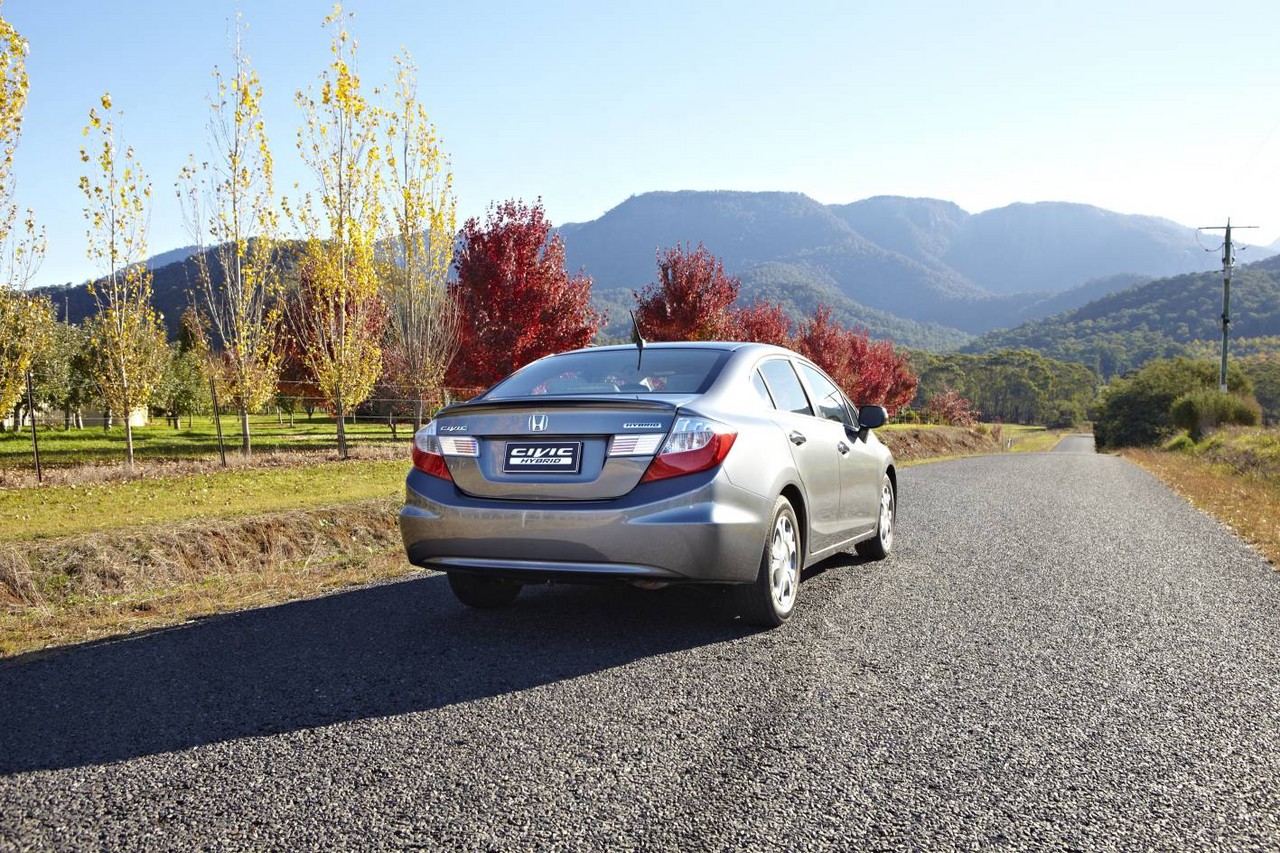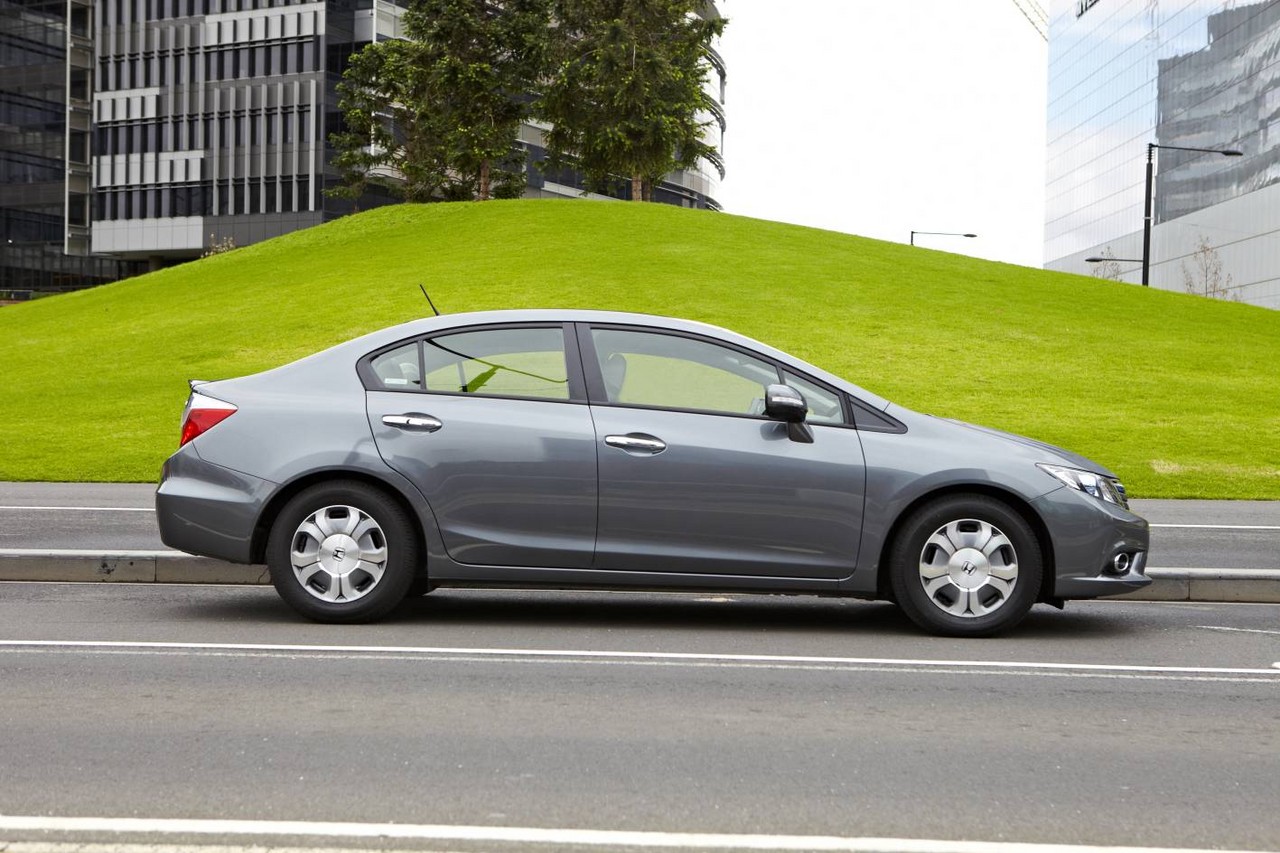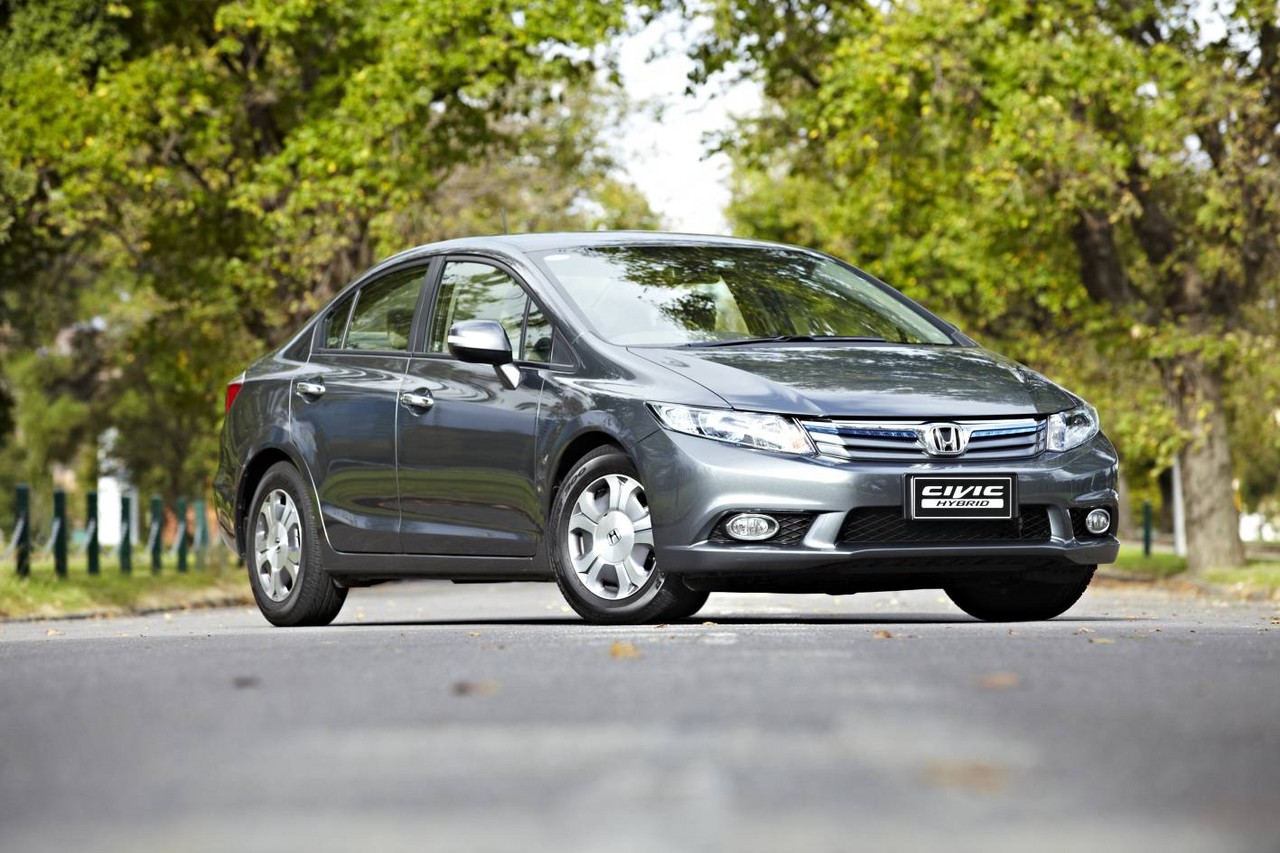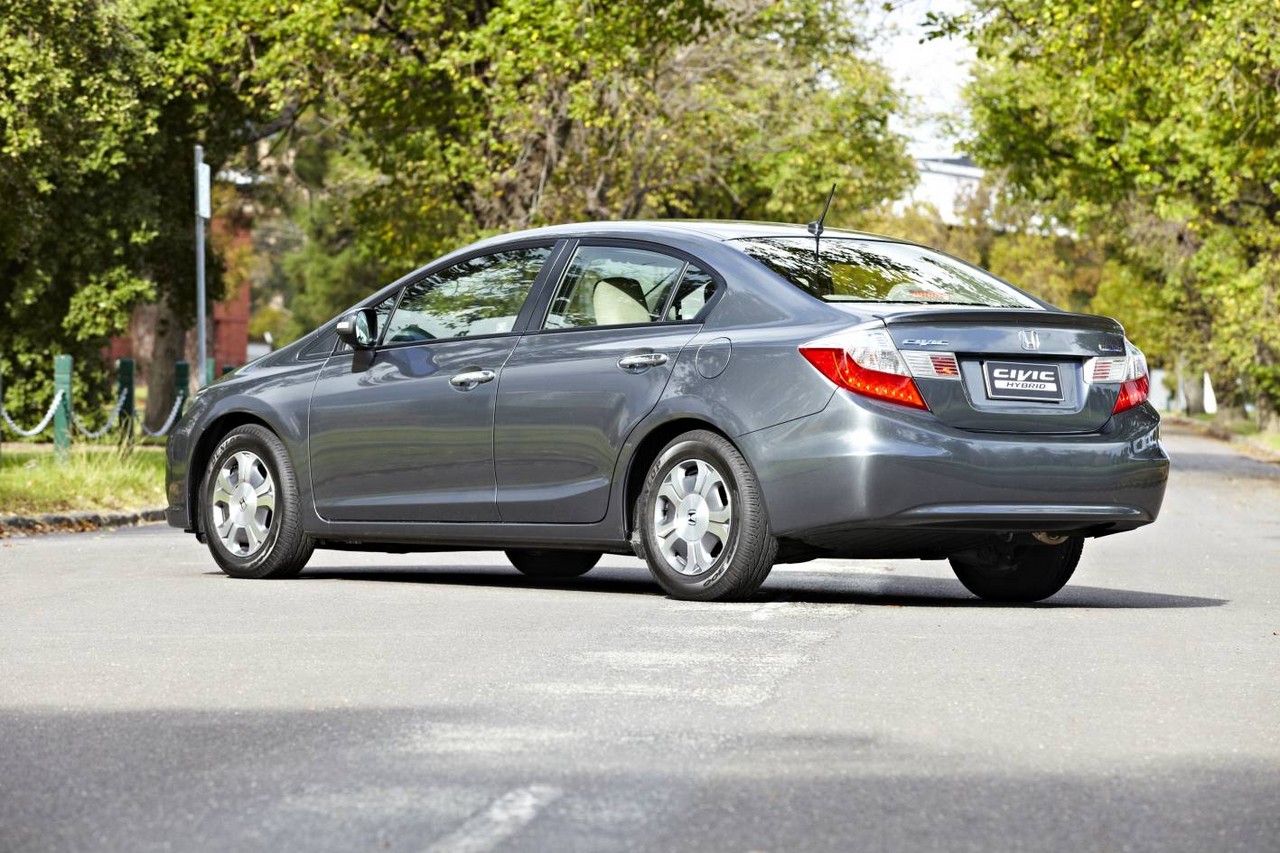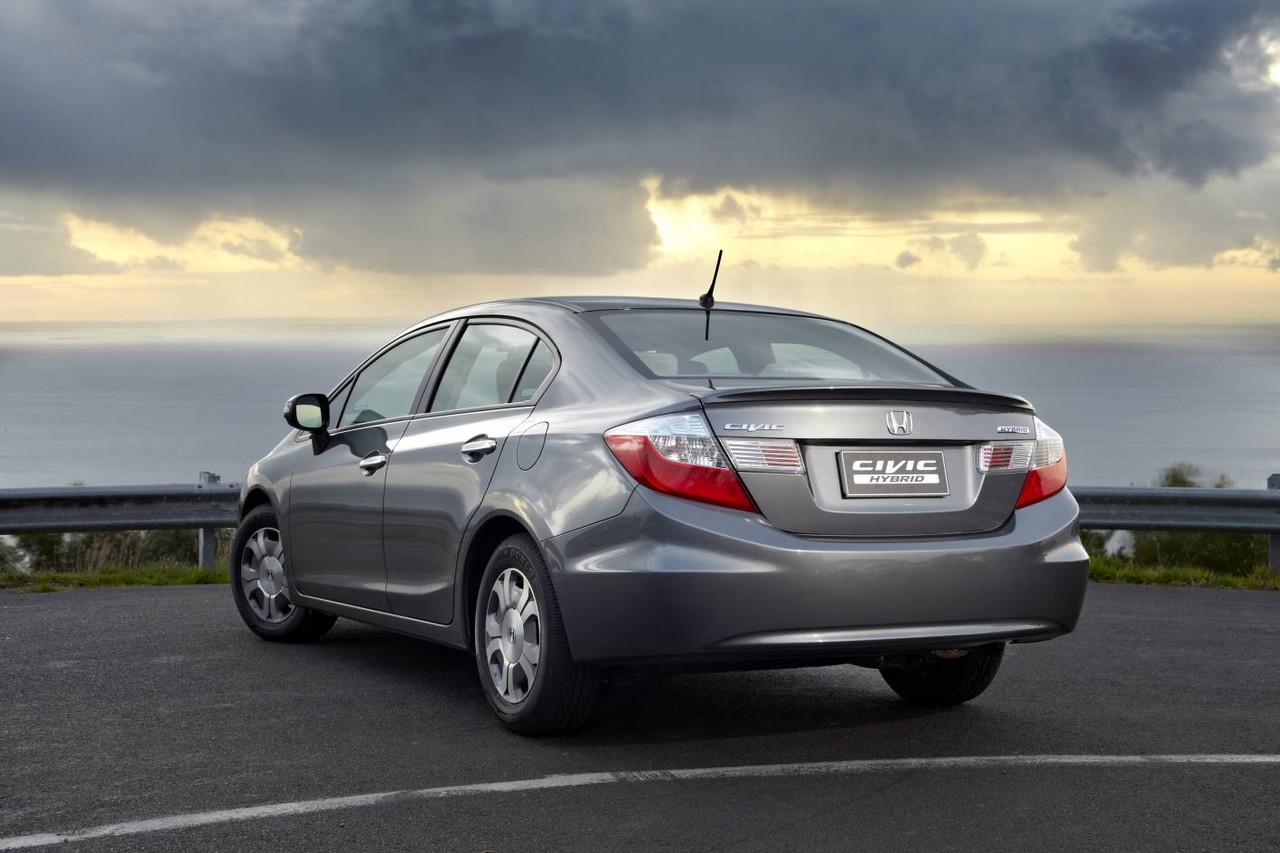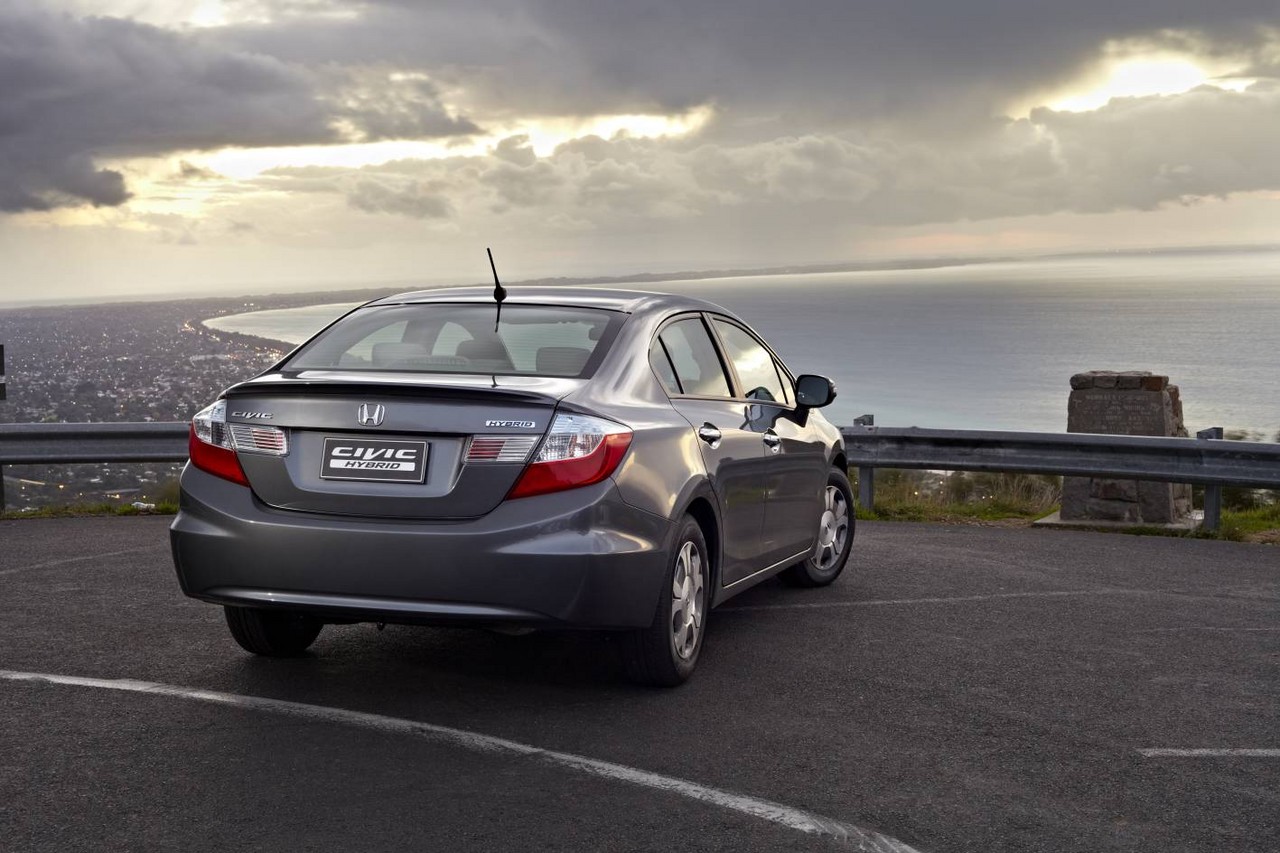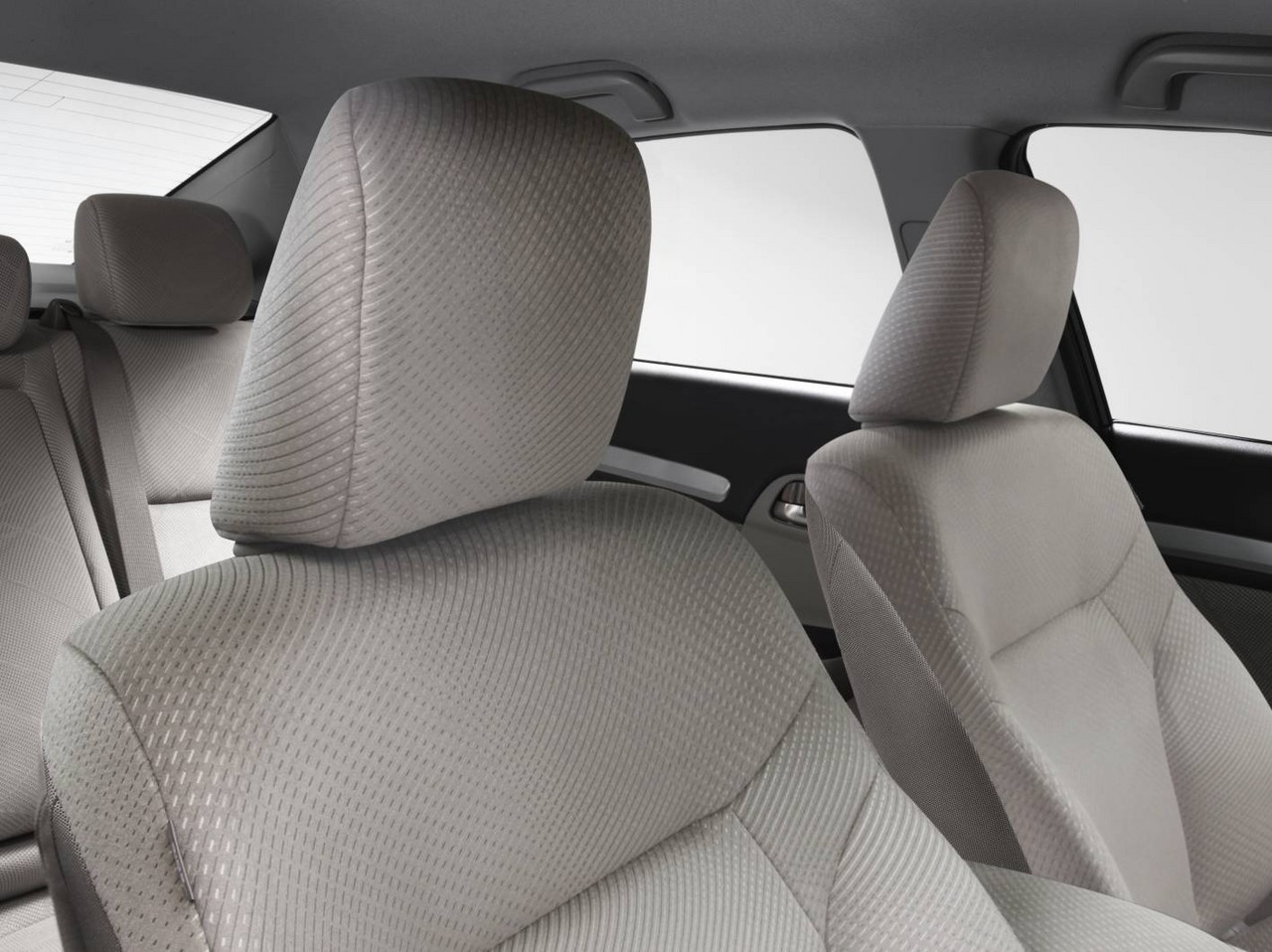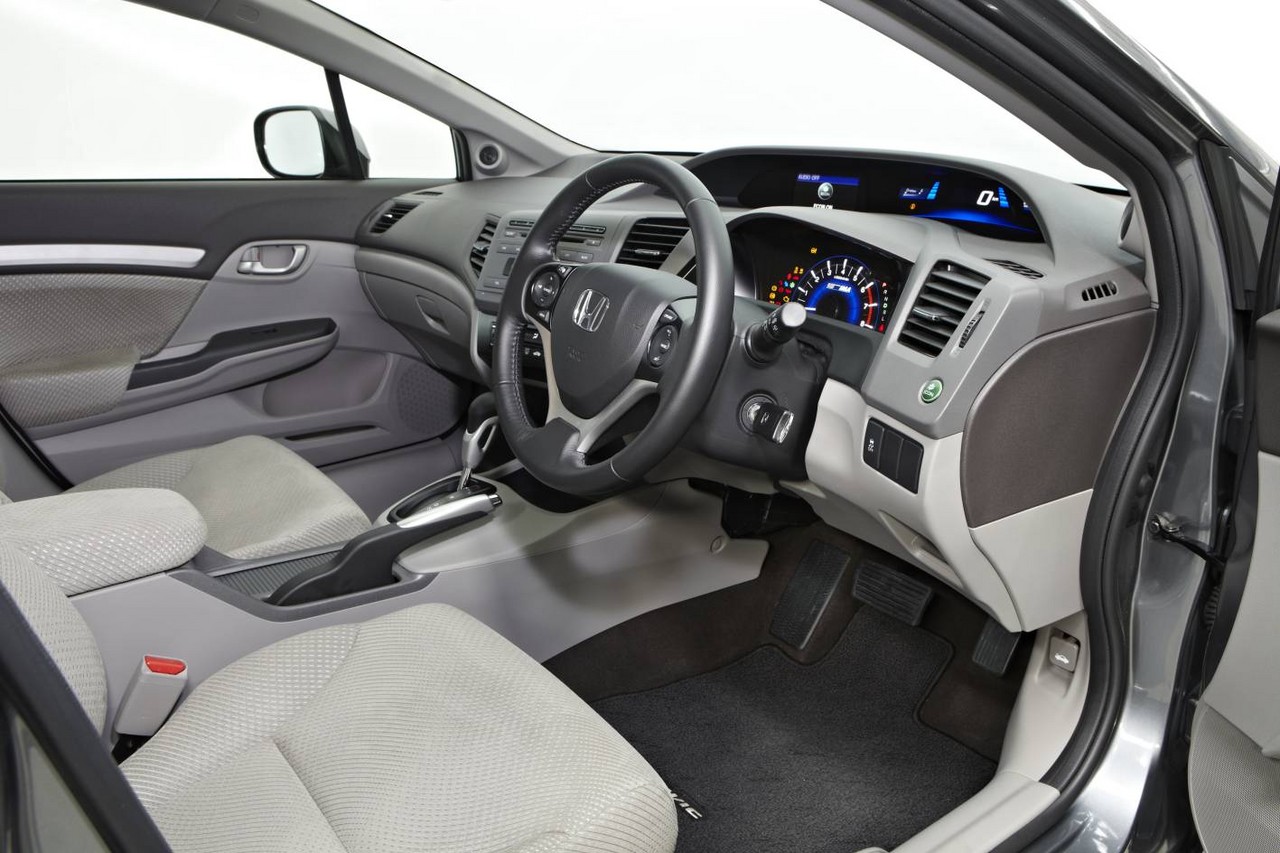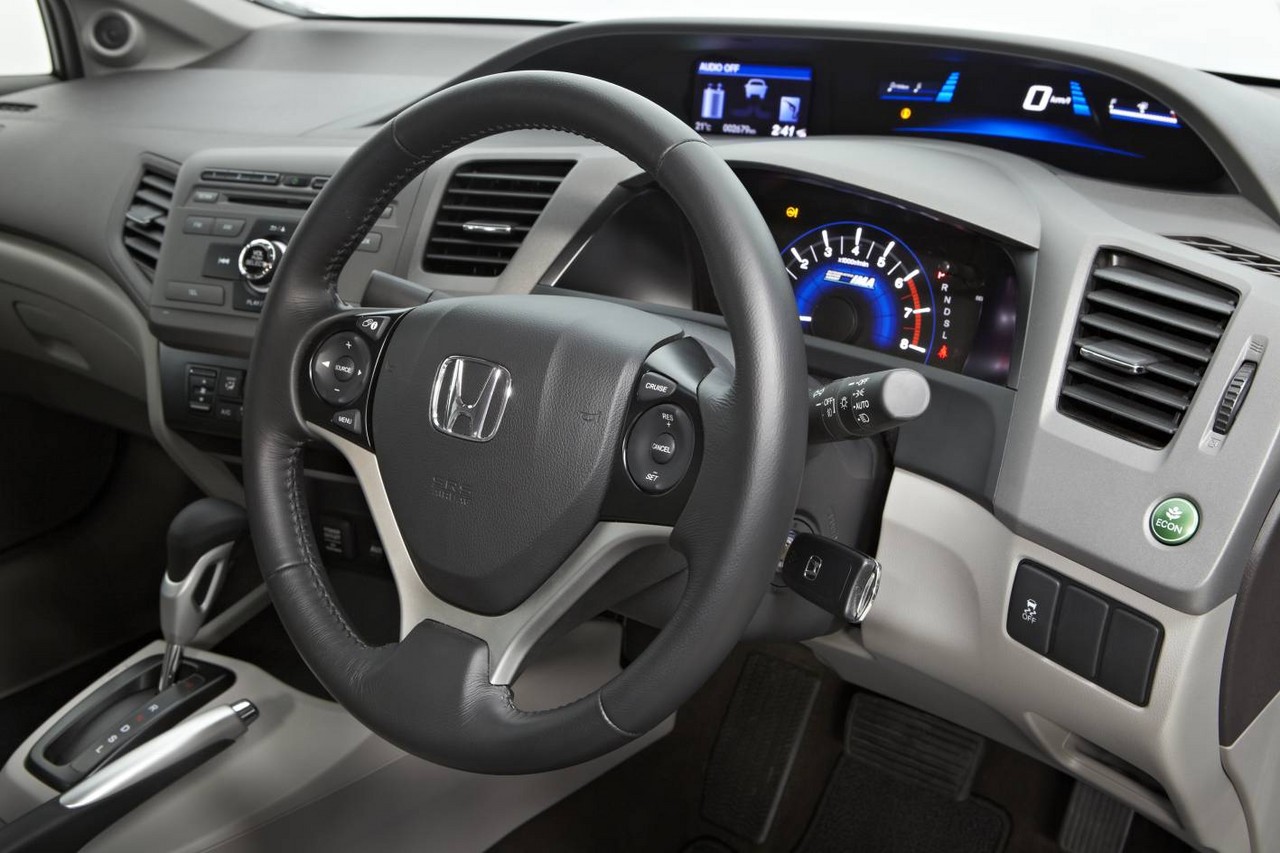
- Fuel-efficient powertrain
- Spacious interior
- Firm ride
- Cheap interior plastics
- Light, overly-assisted steering lacks feel
- Small boot and rear seat doesn’t split and fold
Overview
Released in February 2012, the Honda FB4 Civic Hybrid was a small sedan. Manufactured in Suzuka, Japan, the FB4 Civic Hybrid had a 1.5-litre four-cylinder petrol engine and a 17 kW electric motor – powered by lithium-ion batteries (previously nickel-metal hydride units) – that drove the front wheels via a continuously variable transmission.
The 1.5-litre four-cylinder petrol engine had an aluminium cylinder block, a single overhead camshaft, two valves per cylinder and featured:
- Lean-burn combustion;
- ‘Idle stop’ which enabled the engine to automatically shut down when stationary in traffic and to restart when the driver removed their foot from the brake;
- Honda’s VTEC (Variable Valve Timing and Lift Electronic Control) system which provided the engine with camshaft profiles for low and high RPM operations; and,
- Three-stage Variable Cylinder Management (VCM) which could deactivate all four cylinders when cruising.
The Civic Hybrid’s electric motor assisted the petrol engine under acceleration and would act as a generator to recharge the lithium-ion when decelerating (i.e. regenerative braking). At low speeds and/or light throttle inputs, the Civic Hybrid could run purely on electric power provided the batteries were fully charged. Over the combined ADR 81/02 cycle, the Civic Hybrid achieved fuel consumption of 4.4 litres per 100 km.
The FB4 Civic Hybrid also had an Eco Assist system which encouraged fuel-efficient driving and an ECON driving mode which adjusted throttle response and air conditioning output to further reduce fuel consumption.
Compared to its FD3 Civic Hybrid predecessor, the FB4 Civic Hybrid was 10 mm shorter (at 4540 mm), 5 mm wider (1755 mm), the same height (1435 mm) and had a 30 mm shorter wheelbase (2670mm). Through the increased use of high-strength steel (from 50 per cent to 55 per cent), the FB4 Civic Hybrid body was also lighter while static and dynamic rigidity increased by 10 per cent. Other changes included slimmer A-pillars for improved visibility and a speed-sensitive electric power steering system.
| Power source | Trans. | Peak power | Peak torque |
|---|---|---|---|
| 1.5-litre petrol I4 | CVT | 67 kW | 132 Nm |
| Permanent magnet motor with 144 volt lithium-ion batteries | 17 kW at 1546-3000 rpm | 106 Nm at 1546-3000 rpm | |
| Combined | 82 kW at 500 rpm | 172 Nm at 1000-3500 rpm | |
Safety equipment
Standard safety equipment for the FB4 Civic Hybrid included dual front airbags, front side airbags, full-length curtain airbags, ABS, electronic brake force distribution, brake assist, electronic stability control, traction control and front seatbelts with pretensioners and load limiters.
ANCAP crash testing
In ANCAP crash testing , the FB4 Civic sedan received a five star adult occupant protection rating with a score of 34.91 out of 37 and this result was also applied to the Civic Hybrid. In the offset crash test, there was a slight risk of serious chest and leg injury for the front occupants. In the side impact and pole tests, however, maximum points were awarded.
Features
Standard features for the Civic Hybrid included 15-inch alloy wheels, a six speaker sound system with MP3/WMA-compatibility, auxiliary inputs (USB/iPod) and Bluetooth audio streaming and mobile phone connectivity, climate control air conditioning, cruise control, front fog lights, automatic headlights, rain-sensing wipers, a leather-wrapped steering wheel, remote central locking, power windows and mirrors, a height and reach adjustable steering wheel, height adjustable driver’s seat, 12 volt power outlet and an immobiliser.
July 2013: Civic Hybrid update
From July 2013, the Civic Hybrid was further equipped with satellite navigation with SUNA live traffic updates, a DVD player, grey leather seats, a reversing camera with parking guidelines, daytime running lights, a proximity key, push-button start and vanity mirror illumination.
Related links
- Honda News: Honda’s Hybrid Hatch Is Now Even More Fuel Efficient (June 2012)
- Honda News: Honda Hybrids Receive Updates (July 2013)
- Wikipedia.org: Honda FB4 Civic Hybrid
